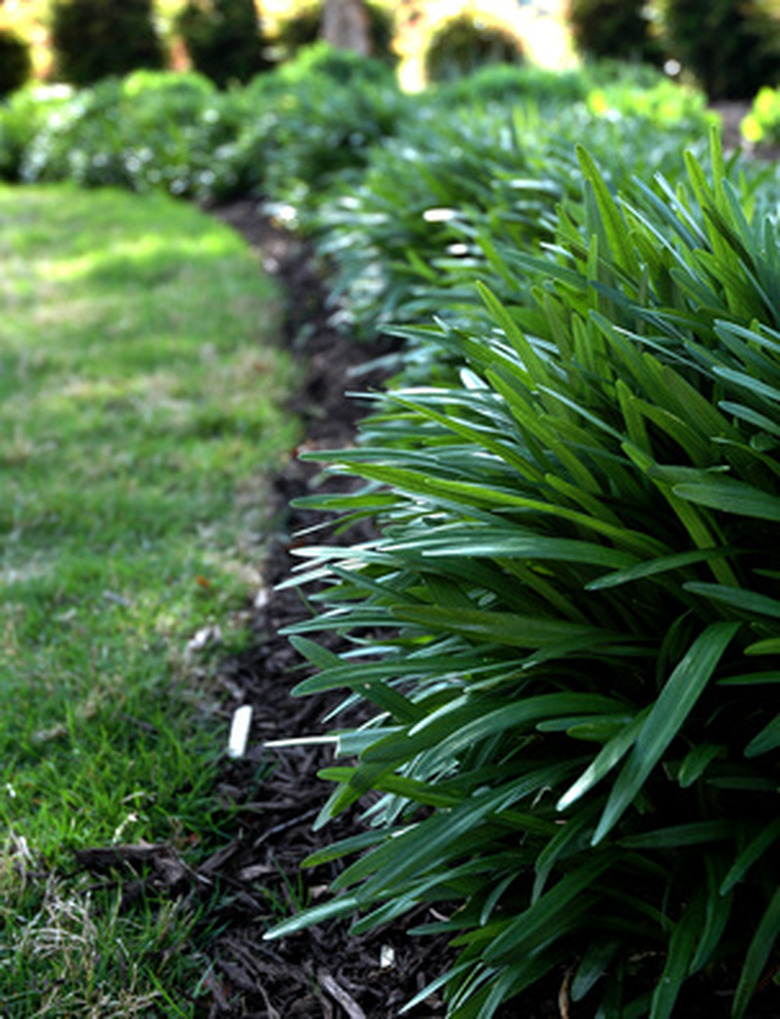How To Remove Nutsedge From Mondo Grass
An expansive carpet of mondo grass (Ophiopogon sp.) makes an attractive, fine-textured ground cover in a garden setting. When soils are fertile and overly moist, conditions favor the establishment of the grass-like weed known as nutsedge (Carex sp.). Once established, these weeds are difficult to eradicate since they grow from tiny bulb-like tubers deep in the soil. Pulling is partially successful, as is using typical garden herbicides that will kill the mondo grass along with the nutsedge. Using a nutsedge-specific herbicide kills the weed with minimal or no detriment to the many tufts of mondo grass.
An expansive carpet of mondo grass (Ophiopogon sp.) makes an attractive, fine-textured ground cover in a garden setting. When soils are fertile and overly moist, conditions favor the establishment of the grass-like weed known as nutsedge (Carex sp.). Once established, these weeds are difficult to eradicate since they grow from tiny bulb-like tubers deep in the soil. Pulling is partially successful, as is using typical garden herbicides that will kill the mondo grass along with the nutsedge. Using a nutsedge-specific herbicide kills the weed with minimal or no detriment to the many tufts of mondo grass.
Step 1
Purchase a herbicide specifically formulated to kill sedges. These herbicides often contain the active chemical ingredient halosulfuron. One product available to home gardeners on the market in the United States is called "Sedgehammer."
- An expansive carpet of mondo grass (Ophiopogon sp.)
- Using a nutsedge-specific herbicide kills the weed with minimal or no detriment to the many tufts of mondo grass.
Step 2
Read the selective herbicide's product label fully to determine best application. Take note of any cautions such as the time of day or temperatures in which to apply the herbicide as well as dosage formulas.
Step 3
Mix a small batch of the herbicide per label directions and apply it to a small area, about 1 square foot, in the mondo grass patch.
Step 4
Monitor this "test area" over two to seven days primarily for any adverse effects on the mondo grass. If you find that the mondo grass yellows and looks sickly, discontinue use of the sedge-selective herbicide altogether. Conversely, if the mondo grass remains green and healthy-looking, plan on applying the chemical to the entire planting area in an attempt to rid it as much of the nutsedge as possible.
Tip
The best way to eliminate or diminish the amount of nutsedge in a bed of mondo grass is to reduce the amount of moisture in the soil. Drier soils favor the growth of the mondo grass and lessens the number of nutsedge seeds that sprout, or the growth and establishment of the weed's tubers. If possible, pull up young nutsedge seedlings to avoid the use of herbicide. You need to weed the bed when they are small (no more than five leaves present per plant), and their roots not well established, for it to be worthwhile. Breaking off the tops and leaving roots is ineffective management.
Warning
Once nutsedge plants are mature and are flowering or displaying the seed heads, application of herbicides is considerably less effective, according to the University of California. Also, when the weeds already have established healthy underground tuber roots, repeated herbicide applications are necessary to kill off the newly emerging (replacement) leaves and, eventually, the roots.
